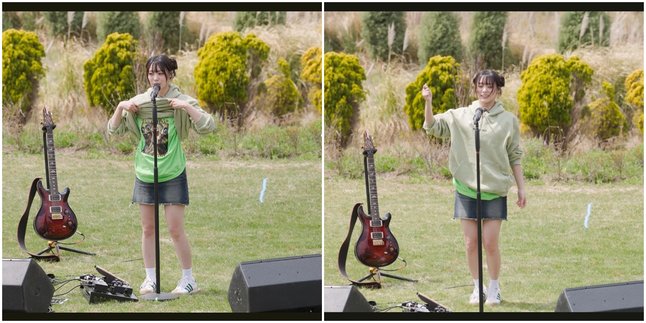Kapanlagi.com - Every year, Muslims welcome the holiday of Idul Adha with a spirit of faith and sacrifice. In 2025, an important question arises again: when exactly will Idul Adha be celebrated and how should we prepare for it? This is because the date of Idul Adha is not always uniform among Islamic organizations and the government.
The determination of the date of Idul Adha cannot be separated from the lunar-based Hijri calendar system. Differences in calculation methods and sighting cause Muhammadiyah and the government to often set different dates. However, for the year 2025, it seems that both parties agree.
Thanks to this certainty, Muslims can make preparations well in advance. In addition to the sacrificial offering, there are also highly recommended sunnah practices to be carried out leading up to and on the day of Idul Adha. This article will discuss the official date of Idul Adha 2025, as well as a series of practices that can enrich our worship during this sacred moment.
1. Determination of the Date of Eid al-Adha 2025 by the Government and Muhammadiyah
Eid al-Adha always falls on the 10th of Dhu al-Hijjah in the Hijri calendar. For the year 2025, the Ministry of Religious Affairs of the Republic of Indonesia predicts that this holiday will take place on Friday, June 6, 2025. This determination is stated in the Joint Decree (SKB) of 3 Ministers regarding national holidays and joint leave for the year 2025.
However, the government will still wait for the results of the isbat meeting at the end of the month of Dhu al-Qi'dah to confirm this decision. The isbat meeting usually considers the results of rukyat (crescent sighting) as well as the calculation methods from various astronomical experts.
Meanwhile, Muhammadiyah has previously announced the determination of the date of Eid al-Adha 1446 Hijri through the Circular of the Central Leadership of Muhammadiyah Number 1/MLM/I.0/E/2025. This organization uses the method of hisab hakiki wujudul hilal which confirms that Eid al-Adha also falls on Friday, June 6, 2025. Thus, it is highly likely that the celebration of Eid al-Adha 2025 will be held simultaneously.
2. Eid al-Adha Holiday Schedule
The national holiday for Eid al-Adha 2025 does not only fall on the day of the celebration itself. The government has set a joint leave for four consecutive days: Friday (June 6) to Monday (June 9). This opportunity becomes a strategic moment to deepen worship, gather with family, or undertake a spiritual journey.
The series of holidays are: Friday, June 6 as the day of Eid al-Adha. Saturday and Sunday as the weekend holiday. Monday, June 9 as the joint leave for Eid al-Adha. Thus, the community has a longer time to carry out worship and strengthen ties of kinship.
This long holiday can also be utilized to prepare sacrificial animals, set intentions, and plan social activities. This is in line with the spirit of Eid al-Adha as a moment of sharing and emulating the obedience of Prophet Ibrahim AS.
3. Sunnah Practices Before the Holiday
Eid al-Adha is not only about the ritual of sacrifice but also a moment to increase good deeds. From the night of Takbir until the day of the celebration, there are many acts of worship you can perform to welcome it maximally. Here is a list of Sunnah practices you can undertake starting from the night of Eid al-Adha:
1. Reviving the Night of Takbir with Dhikr and Takbir
One of the most emphasized Sunnah practices leading up to Eid al-Adha is to proclaim the Takbir from sunset on the eve of the celebration.
- This Takbir can be performed at home, in a mosque, or in a prayer hall, either in congregation or individually.
- This recommendation applies until the imam ascends the pulpit during the sermon after the Eid prayer.
- In addition to Takbir, you can also fill the night with Dhikr, prayers, and reciting Salawat.
Note: This is a form of glorification of Allah's greatness and a way to welcome the celebration with a spirit of faith.
2. Taking a Bath Before Leaving for the Eid Prayer
- It is highly recommended to take a Sunnah bath before the Eid prayer as a form of physical and spiritual preparation.
- The best time to bathe is after Fajr, before heading to the prayer place.
- The purpose of this bath is to purify oneself, eliminate unpleasant odors, and appear fresh before Allah SWT.
This recommendation applies to all Muslims, both men and women. With a clean body and a ready heart, we can welcome the celebration with greater devotion.
3. Using Fragrance and Maintaining Personal Hygiene
In addition to bathing, using fragrance and maintaining personal hygiene is also part of the recommended Sunnah.
- Trim your nails, cleanse your body of body odor, and present yourself with a soft, fragrant aroma.
- This Sunnah is similar to the etiquette of welcoming Friday, as a form of respect for the celebration.
- The Prophet Muhammad (SAW) used to wear perfume for the Eid prayer as a form of respect for this significant occasion.
This practice also shows consideration for those around us so that they are not disturbed by unpleasant odors.
4. Wearing the Best and Clean Clothes
Festivals are special occasions, and the Prophet Muhammad SAW himself exemplified wearing the best clothes.
" " (HR. Ibn Abbas)
"The Prophet Muhammad SAW wore a burda hibarah (beautiful clothing from Yemen) on the festival day."
- It is recommended to wear the best clothes we have, clean, and pure.
- The color white is mentioned as the best clothing color in several narrations, but it is not obligatory.
- Women are also advised to dress modestly and not excessively, in accordance with Islamic law.
Dressing neatly is a form of gratitude for Allah's blessings, and part of honoring the moment of congregational worship.
4. Procedure for Performing Worship on Eid al-Adha
When heading to the Id prayer place, it is recommended to walk, as exemplified by the Prophet Muhammad SAW. It was narrated from Ibn Umar RA: "The Prophet Muhammad SAW went to the 'ied prayer on foot, and similarly returned on foot." (HR. Ibn Majah no. 1295)
The next sunnah is not to eat beforehand before the Idul Adha prayer. This is different from Idul Fitri, where it is recommended to eat first. The Prophet SAW only ate after returning from the Idul Adha prayer, and it is even better if the food is from the sacrificial meat.
The Id prayer itself is recommended to be performed in an open field and begins with a sermon after two rak'ahs. The congregation is encouraged to arrive early to occupy the front rows and to participate in the takbir in congregation before the prayer begins.
5. Sunnah Practices After Prayer
Eid al-Adha is not just about sacrificing an animal. After the Eid prayer, there are several other Sunnah practices that are highly recommended to be performed. All these practices aim to perfect worship, strengthen brotherhood, and spread goodness. Let's take a look at the following list.
1. Sacrificing Animals: The Essence of Eid al-Adha
- The most important practice after the Eid prayer is to sacrifice an animal for those who are able.
- The sacrifice is a form of obedience and emulation of Prophet Ibrahim AS who was willing to sacrifice his son for Allah.
- The slaughtering can be done starting from the 10th of Dhu al-Hijjah after the Eid prayer until the end of the Tashriq days (13th of Dhu al-Hijjah).
- The meat from the sacrifice should preferably be distributed to the poor, neighbors, and relatives to foster a sense of gratitude and togetherness.
The sacrifice is not just a ritual, but also a means of sharing and drawing closer to Allah and fellow human beings.
2. Strengthening Relationships with Family and Neighbors
- Eid al-Adha is also a moment to strengthen ties of kinship, whether with family, neighbors, or friends.
- The encouragement to visit and greet one another is a way to maintain social harmony and Islamic brotherhood.
- Visiting can be done through direct visits, or if not possible, through messages and prayers.
- This moment is also suitable for mutual prayers and support, especially for those who have just gone through life tests.
Eid al-Adha is a day of shared happiness, and nothing is more joyful than strengthening the bonds of the heart with those around us.
3. Increasing Dhikr on the Tashriq Days
- In addition to sacrifice and maintaining relationships, increasing dhikr during the Tashriq days (11th-13th of Dhu al-Hijjah) is also highly recommended.
- The Tashriq days are part of the days that are honored in Islam.
- Reciting takbir, tahmid, tahlil, and prayers is a form of glorification of Allah for all His blessings.
- It is recommended to do this after every obligatory prayer, both in congregation and alone.
By increasing dhikr, the heart becomes calm and the spiritual relationship with Allah becomes stronger.
4. Spreading Smiles and Kindness to Others
- Although it sounds simple, spreading smiles and happiness is a very meaningful part of the sunnah.
- The Prophet Muhammad SAW said that a smile is charity, and holidays are the ideal moments to spread it.
- Welcome others with a bright face, gentle words, and a friendly attitude.
- This applies at home, in the workplace, and in the social environments where we interact.
The joy of the holiday is not just about new clothes or delicious food, but also about a peaceful and loving state of mind.
5. Sharing Blessings in Any Form
- Besides sacrificial meat, you can also share in other forms according to your ability.
- This can be in the form of additional food, simple gifts, or even just attention and assistance.
- Giving to those in need during the holiday will make happiness feel more evenly distributed.
This action is in line with the essence of sacrifice: giving up something for the good of others. Eid al-Adha is an opportunity to prove love for Allah by loving His other creatures.
6. Questions About Idul Adha
When will Idul Adha 2025 be held?
Idul Adha 2025 is estimated to fall on Friday, June 6, 2025, according to the government and Muhammadiyah.
Will the Idul Adha 2025 holiday be long?
Yes, the national holiday and joint leave will last for four days, from June 6 to June 9, 2025.
What are the sunnah practices during Idul Adha?
The sunnah practices include takbiran, bathing before the Id prayer, wearing the best clothes, walking to the mosque, not eating before the prayer, and sacrificing an animal.
What is the difference between eating during Idul Fitri and Idul Adha?
During Idul Fitri, it is sunnah to eat before the prayer, whereas during Idul Adha, it is sunnah to eat after the prayer, preferably after the sacrifice.
(kpl/frr)
Disclaimer: This translation from Bahasa Indonesia to English has been generated by Artificial Intelligence.












